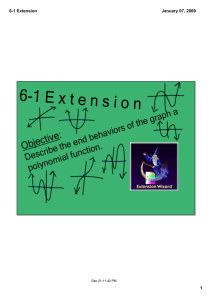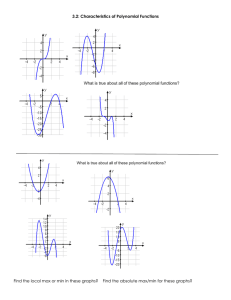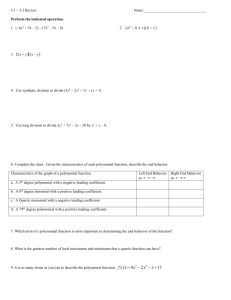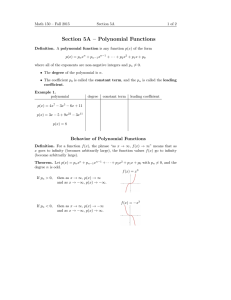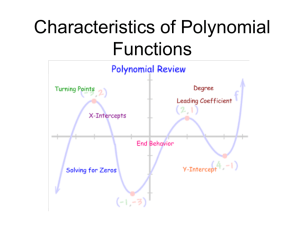61 E x t e n s i o n : Objective Describe the end behaviors of the graph a
advertisement
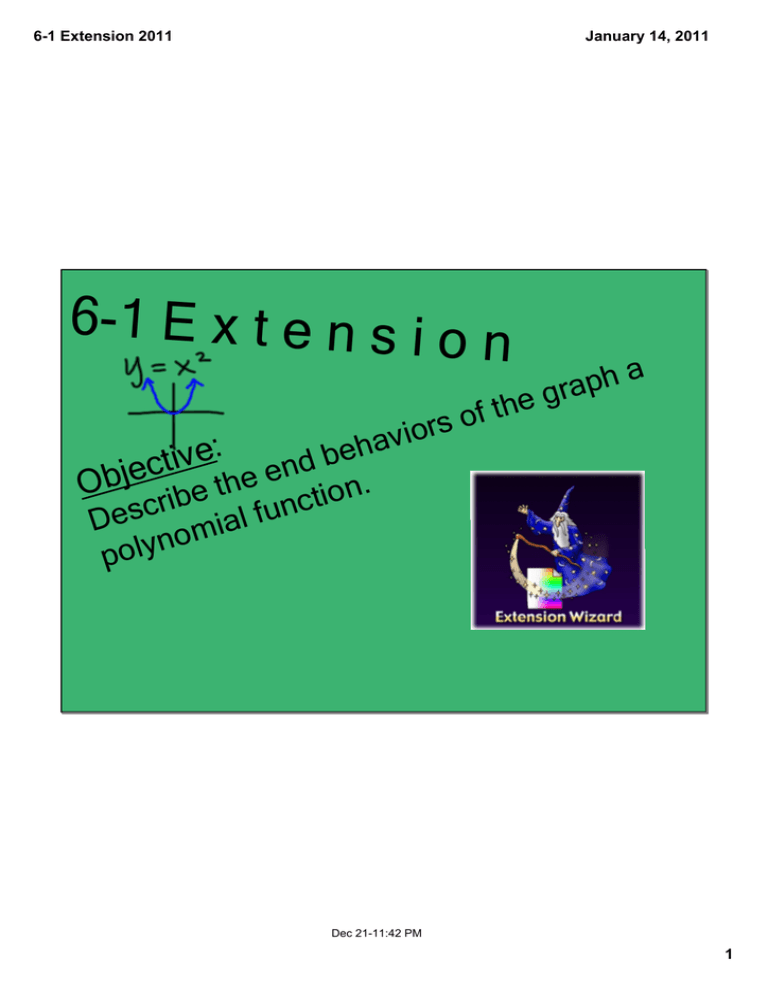
6­1 Extension 2011 January 14, 2011 6­1 E x t e n s i o n a h rap g e h t of rs io v a h : e e b v i t d c n e e j b e . h O t n e o i t b c ri n c s u f e l D ia m o n y l o p Dec 21­11:42 PM 1 6­1 Extension 2011 January 14, 2011 End Behavior ­ direction of the far left and far right portions of the graph. Four types of end behavior: up & up down & down down & up up & down Dec 21­11:58 PM 2 6­1 Extension 2011 January 14, 2011 Dec 21­11:43 PM 3 6­1 Extension 2011 January 14, 2011 Determine the end behavior by looking at the coefficient and degree of the leading term of a polynomial function. Right: • If the leading coefficient is positive, then the graph rises to the right. • If the leading coefficient is negative, then the graph falls to the right. Left: • If the degree of the polynomial is even, then the left behavior is the same as the right behavior. • If the degree of the polynomial is odd, then the left behavior is the opposite of the right behavior. Dec 21­11:43 PM 4 6­1 Extension 2011 January 14, 2011 Example: Describing End Behavior Determine the end behavior of the graph of each polynomial. a. y = 4x3 ­ 3x The leading coefficient 4 is positive, so the graph rises to the right. b. f﴾x﴿ = ­2x4 + 8x3 ­ 8x2 The degree of the polynomial is 3, which is odd. The left behavior is opposite the right behavior, so the graph falls to the left. The leading coefficient ­2 is negative, so the graph falls to the right. The degree of the polynomial is 4, which is even. The left behavior is the same as the right behavior, so the graph falls to the left. The end behavior is . The end behavior is . Dec 21­11:44 PM 5 6­1 Extension 2011 January 14, 2011 Homework: page 312 ﴾1 ­ 10﴿ Dec 21­11:44 PM 6 Attachments hold up.mp3
